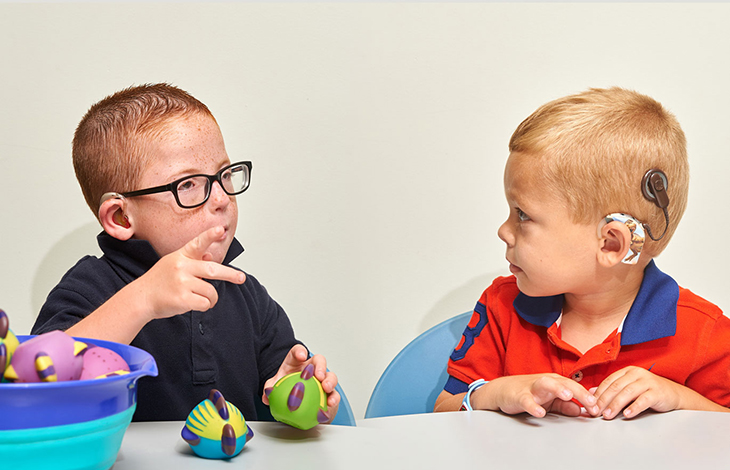
A groundbreaking medical achievement has emerged in China, where a human trial successfully restored hearing in 10 children born deaf through a revolutionary genetic therapy method. This accomplishment, celebrated by MIT as China’s inaugural domestic gene therapy breakthrough, is deemed “the most dramatic restoration of a lost sense yet achieved.”
The innovative procedure follows the principles of gene therapy, wherein children such as Li Xincheng received injections of a reprogrammed virus carrying replacement DNA. The targeted area for this genetic modification was the inner ear canal responsible for detecting vibrations and transmitting this information to the brain.
Li Xincheng’s mother, Qin Lixue, reported a remarkable outcome within less than a month. For the first time in her five years of life, Li Xincheng could hear from her treated ear. Notably, she began repeating various rhymes and songs back to her mother, who sang them with a hand covering her mouth to prevent lip-reading.
This unprecedented success, as highlighted by MIT Technological Review, underscores the historic nature of the achievement, marking a pivotal moment in the field of gene therapy and the restoration of sensory functions.
“We were careful, and a little bit nervous, because it was the first in the world,” said Yilai Shu, who is a surgeon and scientist at Fudan University in Shanghai, and part of the team who treated the five children with hearing loss.
“Before the treatment, if you put them in a movie theater with the loudest sound, they wouldn’t hear it,” said Zheng-Yi Chen who is an associate professor at Mass Eye and Ear, a Harvard-affiliated hospital in Boston, and who also assisted in the design and plan of the said study. “Now they can hear close to normal speech, and one can hear a whisper.”
Among Shu’s five children, four regained their hearing through a novel gene therapy, while one did not. The research team speculates that this exception could be attributed to the child’s pre-existing immune response to the utilized virus.
However, it’s crucial to note that this groundbreaking gene therapy is not a universal solution. Its primary purpose is to address a specific genetic defect responsible for producing the otoferlin protein. Otoferlin is essential for the development of specialized hairs in the inner ear that vibrate at distinct frequencies, transmitting auditory information to the brain.
This therapy targets a relatively rare condition, affecting only 1% to 3% of individuals born deaf, translating to around 900 children annually in the world’s second-most populous country. Despite its limited applicability, Lawrence Lustig, a physician at Columbia University overseeing hearing treatment studies, suggests that the profound success of this therapy, enabling children to experience sound for the first time, could serve as a catalyst for increased funding directed towards broader causes of deafness.
It’s noteworthy that genetic therapies, encompassing techniques like CRISPR, have demonstrated remarkable achievements in addressing other sensory impairments. In 2021, for instance, there were notable successes in treating blindness. These included a Frenchman with retinitis pigmentosa, characterized by the deterioration of photoreceptive cells in the eyes, as well as two patients in Portland, Oregon, with Leber congenital amaurosis (LCA), a rare retinal mutation. Additionally, ten individuals with LCA underwent successful treatment at the Perelman School of Medicine at the University of Pennsylvania. The expanding repertoire of successful genetic therapies underscores the potential for transformative advancements in addressing various medical conditions.



